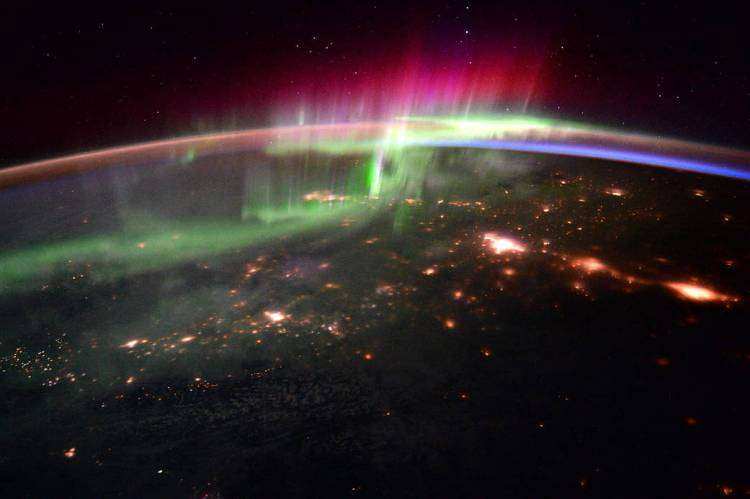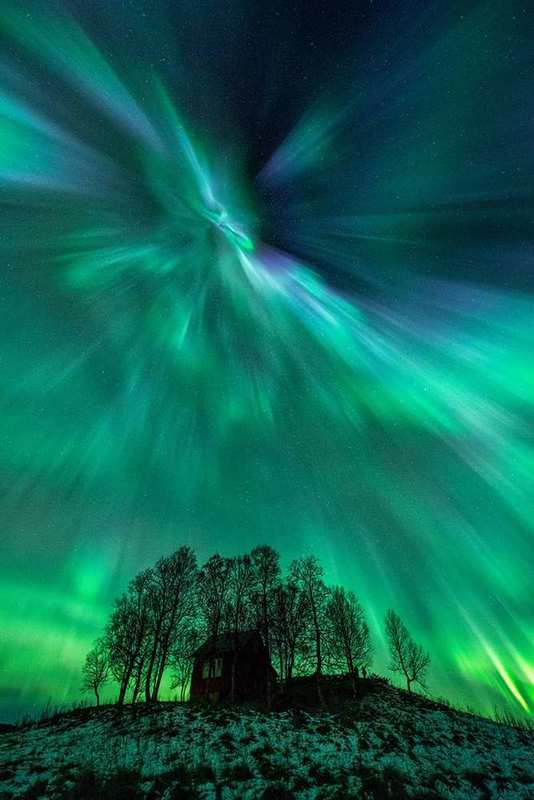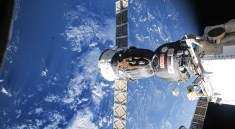Expedition 50 Flight Engineer Thomas Pesquet of the European Space Agency (ESA) photographed brightly glowing auroras from his vantage point aboard the International Space Station on March 27, 2017. Pesquet wrote, “The view at night recently has been simply magnificent: few clouds, intense auroras. I can’t look away from the windows.”
The dancing lights of the aurora provide stunning views, but also capture the imagination of scientists who study incoming energy and particles from the sun. Aurora are one effect of such energetic particles, which can speed out from the sun both in a steady stream called the solar wind and due to giant eruptions known as coronal mass ejections or CMEs.








